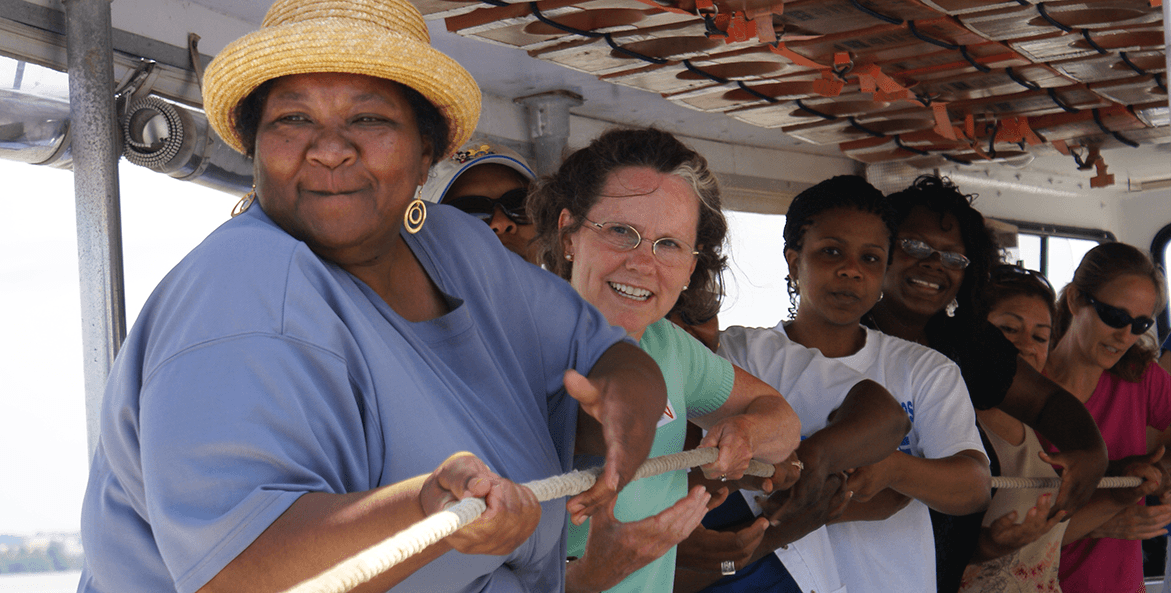When preparing for the course I didn’t really think much about how this Teachers on the Bay course would affect my teaching. I was thrilled to find a course I could afford and get graduate credit for my license renewal, took place during the summer over 5 days, and required a limited amount of work after the course was completed. I read the pre-course readings diligently as though I was studying for an essay question test. I even highlighted and wrote notes in the margins of all three readings. By the time I read the last reading, The Tragedy of the Commons: The Case of the Blue Crab, I was more than concerned. I was viewing the course as a five-day test of my ability to identify a multitude of grasses, explain a massive watershed/ecosystem, and discuss the geology of the Chesapeake Bay over time. I religiously followed the packing list and with trepidation packed my car. I steeled by resolve and promised myself that I would give it my best shot.
Over the five days, I found myself far outside my comfort zone. My biggest concern was understanding the Chesapeake Bay watershed and figuring out how to connect it to my students’ lives. Each day I took notes and tried to fill out the Field Investigation Journal. Looking back at my notes, I notice that they are all over the place. Some days I focused on data, others on diagrams such as the topic pyramid/energy flow. My Field Investigation Journal is a jumble of websites, definitions, questions, book suggestions, and random ideas for a MWEE.
Somewhere along the five days, my viewpoint changed from “must do” to “want to”. The parts of the course that brought this change in mindset about are varied. The screened in porch at Fox Island was where I enjoyed spending most of my time. The sound of the waves, the wind across the expanse of the porch, and the horizon opened my mind to the beauty of the Bay. In sitting still and paying attention, I realized that getting bogged down in the minutia of dissolved oxygen and my perceived concerns about what I thought I was supposed to know, was not important compared to having a passion for the open spaces of the Chesapeake Bay. Another event was going to Smith Island and meeting Mary Ada. Meeting Mary Ada, for me, wasn’t so much about Smith Island cake (although the cake was delicious). It was more about understanding a sense of place. After walking around Smith Island, I connected the waterman life Mary Ada described to the science of the Bay. This connection was an “aha” moment for me.
After completing the Teachers on the Bay course, I read Tom Horton’s book, An Island Out of Time A Memoir of Smith Island in the Chesapeake. Reading An Island Out of Time brought it all together for me. The connections I had been struggling to make—people, science, and place, started to make sense. In turn, creating a MWEE for my students became less about scientific understanding of data, and more about enabling that connection for my fourth-grade classes.
I now realize that a combination of specific scientific skills such as collecting and interpreting data along with understanding their place in the Chesapeake Bay watershed is my goal. Science specific standards can be integrated with math and social studies to give my students an experience similar to the one I had. In the end, my students won’t remember the exact data points, but they will remember immersing themselves in understanding how their individual actions affect the health of the Chesapeake Bay watershed.
—Maren Mapp, educator and Chesapeake Classrooms participant



